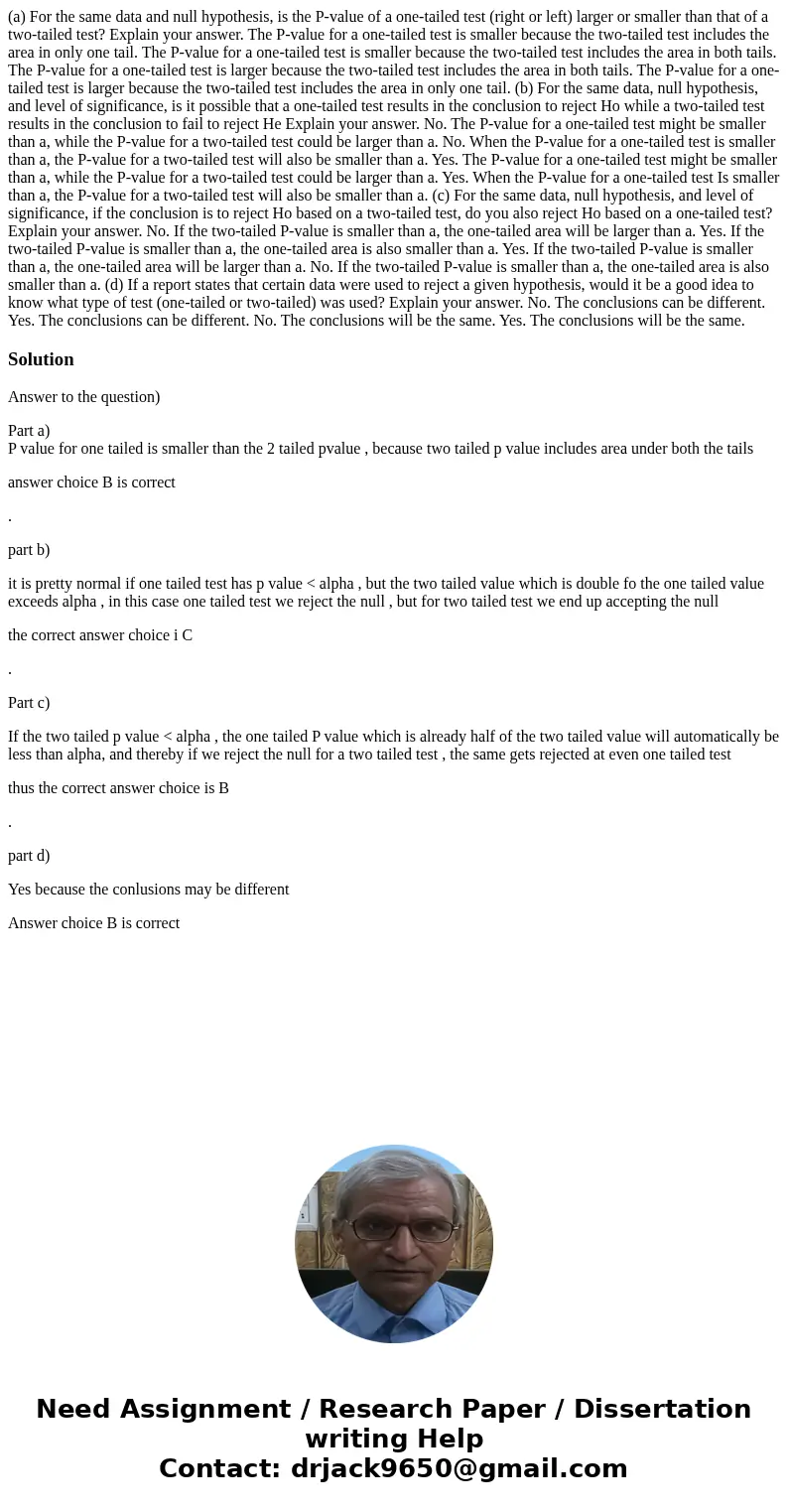(a) For the same data and null hypothesis, is the P-value of a one-tailed test (right or left) larger or smaller than that of a two-tailed test? Explain your answer. The P-value for a one-tailed test is smaller because the two-tailed test includes the area in only one tail. The P-value for a one-tailed test is smaller because the two-tailed test includes the area in both tails. The P-value for a one-tailed test is larger because the two-tailed test includes the area in both tails. The P-value for a one-tailed test is larger because the two-tailed test includes the area in only one tail. (b) For the same data, null hypothesis, and level of significance, is it possible that a one-tailed test results in the conclusion to reject Ho while a two-tailed test results in the conclusion to fail to reject He Explain your answer. No. The P-value for a one-tailed test might be smaller than a, while the P-value for a two-tailed test could be larger than a. No. When the P-value for a one-tailed test is smaller than a, the P-value for a two-tailed test will also be smaller than a. Yes. The P-value for a one-tailed test might be smaller than a, while the P-value for a two-tailed test could be larger than a. Yes. When the P-value for a one-tailed test Is smaller than a, the P-value for a two-tailed test will also be smaller than a. (c) For the same data, null hypothesis, and level of significance, if the conclusion is to reject Ho based on a two-tailed test, do you also reject Ho based on a one-tailed test? Explain your answer. No. If the two-tailed P-value is smaller than a, the one-tailed area will be larger than a. Yes. If the two-tailed P-value is smaller than a, the one-tailed area is also smaller than a. Yes. If the two-tailed P-value is smaller than a, the one-tailed area will be larger than a. No. If the two-tailed P-value is smaller than a, the one-tailed area is also smaller than a. (d) If a report states that certain data were used to reject a given hypothesis, would it be a good idea to know what type of test (one-tailed or two-tailed) was used? Explain your answer. No. The conclusions can be different. Yes. The conclusions can be different. No. The conclusions will be the same. Yes. The conclusions will be the same.
Answer to the question)
Part a)
P value for one tailed is smaller than the 2 tailed pvalue , because two tailed p value includes area under both the tails
answer choice B is correct
.
part b)
it is pretty normal if one tailed test has p value < alpha , but the two tailed value which is double fo the one tailed value exceeds alpha , in this case one tailed test we reject the null , but for two tailed test we end up accepting the null
the correct answer choice i C
.
Part c)
If the two tailed p value < alpha , the one tailed P value which is already half of the two tailed value will automatically be less than alpha, and thereby if we reject the null for a two tailed test , the same gets rejected at even one tailed test
thus the correct answer choice is B
.
part d)
Yes because the conlusions may be different
Answer choice B is correct

 Homework Sourse
Homework Sourse